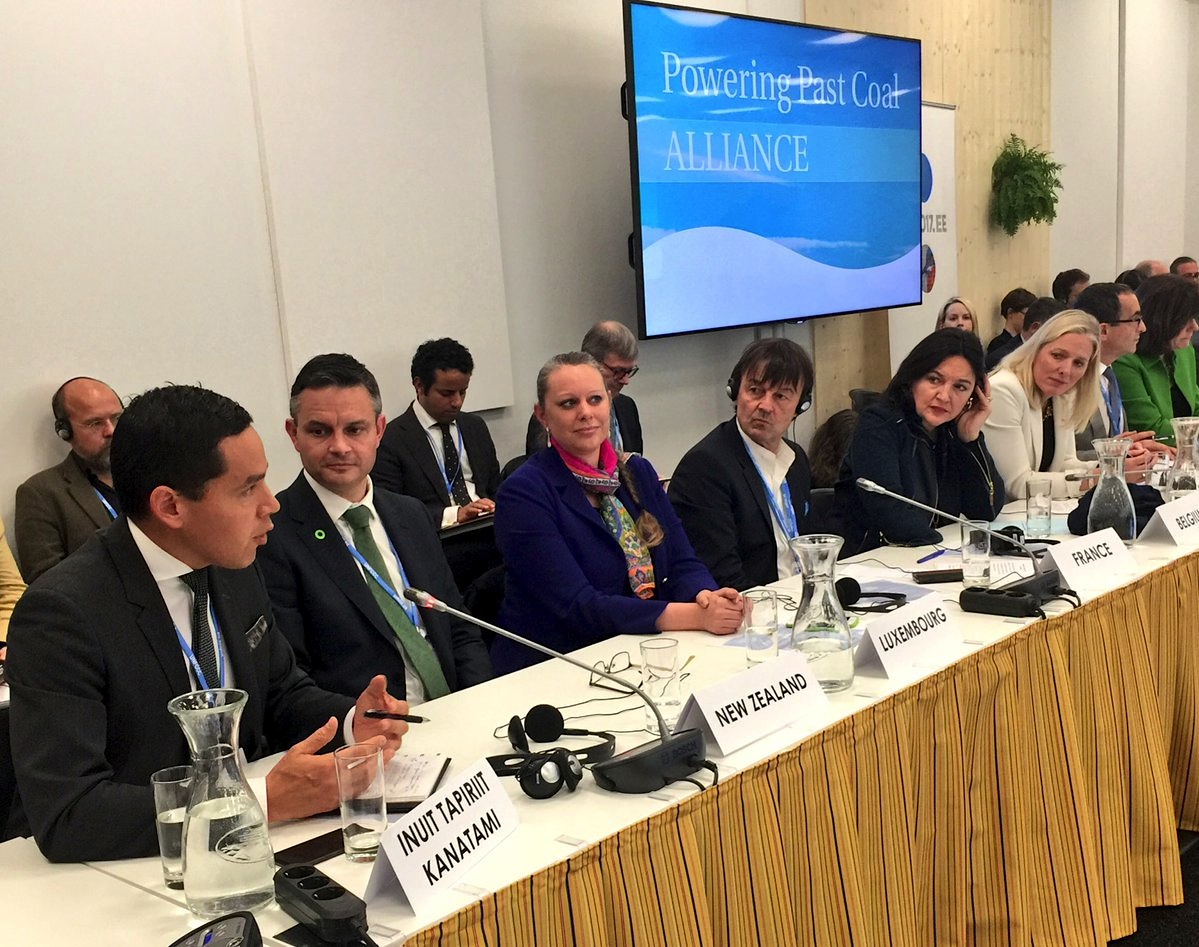Global climate talks must see more Inuit inclusion, says ITK
Indigenous peoples of the world — including Inuit — left the United Nations’ COP23 talks in Bonn, Germany Nov. 17 with some assurance they could play a bigger role in future UN climate meetings.
“Inuit can be part of the climate solution. Inuit have the ambition to be leaders in the international climate action community,” said Natan Obed, the president of Inuit Tapiriit Kanatami, in comments made Nov. 15 in Bonn at a Canadian delegation presentation.

Obed and the Inuit Circumpolar Council’s Canadian president, Nancy Karetak-Lindell, visited Bonn as members of the official Canadian delegation, along with First Nations and Métis representatives.
In a statement after returning home from COP23, Karetak-Lindell said many Indigenous groups, representing some of the 370 million Indigenous peoples worldwide, had “similar concerns as us Inuit and our challenges to be recognized as knowledge holders of our land and waters and how we can offer solutions to the weather changes affecting our planet and many other struggles we have as a people.”
Increased involvement from Inuit and other Indigenous peoples on climate action is expected to flow from the Bonn gathering, called COP23 because it was the 23rd annual conference of the parties that joined the UN Framework Convention on Climate Change in 1993 to combat climate change by limiting average global temperature increases.
At COP23, progress was made on the “Local Communities and Indigenous Peoples Platform,” called for in the Paris Agreement on climate change, signed at COP21 in 2015.
This platform, which Canada said it’s committed to, aims to allow Indigenous peoples to share lessons learned from responding to climate change and to deepen their engagement in the UN process.
On Nov. 7, Indigenous Peoples Day at COP23, Patricia Espinosa, the executive secretary of the climate change talks, mentioned how elders living in communities throughout the Arctic were among the first to sound the warning about climate change.
“And what they saw was changes in migration patterns, the breaking up of ice earlier in the spring, animals that were no longer there, and the constant, frustrating need to adapt. For the most part, this went largely ignored by the rest of the world,” Espinosa said.
“This is no longer the case. We now know, and experience, the devastating impacts of climate change on people’s lives. We also know that we are running out of time to turn things around.”
To that end, at COP23 Canada worked to gain support for what’s called the Kigali Amendment to the Montreal Protocol, which aims to cut the production and consumption of ozone-depleting substances which eat away at the atmosphere’s protective ozone later.
The Kigali Amendment, which targets polluting hydroflourocarbons found in coolants, could prevent up to 0.5 degrees C of global warming by 2100, while continuing to protect the ozone layer.
In Bonn, Canada also launched a global alliance, the Powering Past Coal Alliance, to phase out coal-produced electricity by 2030.
Coal-fired electricity, still produced in Alberta, Saskatchewan, Nova Scotia and New Brunswick, is among the world’s largest sources of air pollution, including sulphur dioxides, nitrogen oxides, and mercury pollutants, which have “significant health and environmental impacts,” a federal backgrounder on the alliance said.
In a release on the alliance, Canada also said it will work closely with the provinces and territories to attract investments in renewable energy and investment in “green” infrastructure, such as “interprovincial grid connections that facilitate the flow of non-emitting electricity.”
This could be good news for the Manitoba to Nunavut power link for which the Kivalliq Inuit Association wants to seek infrastructure money.
Because the 2015 Paris Agreement didn’t spell out exactly how its signatories would deal with adaptation, emission reductions, capacity-building and technology, COP23 aimed to make progress in all these areas so that these guidelines could be completed by COP24 in Poland in 2018.
The overall goal of the Paris Agreement is to keep a global temperature rise this century to below two degrees Celsius above pre-industrial levels and limit the temperature increase even further to 1.5 degrees C.
“1.5 degrees above pre-industrial levels is not only ambitious, but necessary for the survival of our people,” Obed said during a Canadian delegation presentation during COP23.
If action isn’t taken, the temperature increases in the Arctic could be several times higher than 1.5 C, as much as 8.5 C more in summer or as much as 20 C more in winter by the end of the century, according to information from the World Meteorological Society delivered at an Arctic event at COP23.